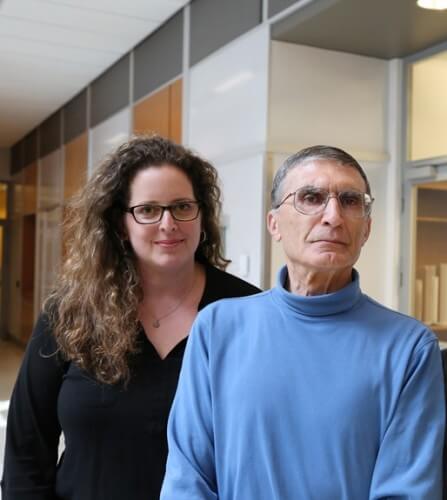Dr. Shira Ader, a postdoctoral student in Sanger's laboratory, and formerly of the Weizmann Institute, was a partner in mapping the Nucleotide Excision Repair mechanism that Sanger discovered and for which he won the Nobel Prize

As you may recall, about two weeks ago it was announced that the Nobel Prize in Chemistry will be awarded this year to three scientists - Thomas Lindahl , Paul Modrich וAziz Sanger - for their contribution to the discovery of various mechanisms of DNA repair.
Cells that are during DNA replication. (Phase of division) are particularly sensitive to these damages. In light of the fact that cancer cells divide at a higher frequency than healthy cells, DNA damage is used as a central mechanism in chemotherapy drugs (such as cisplatin). In order to deal with this damage, the cancer cells use the DNA repair mechanism. So in fact, both the healthy cells and the cancer cells need the repair mechanism to survive. The challenge in treating cancer is to damage the cancer cell and its ability to divide without damaging the healthy cells.
In the considerations of the award committee it is stated that Prof. Aziz Sanger was awarded for his contribution to the discovery and understanding of the mechanism of Nucleotide Excision Repair. In this mechanism, a piece of DNA that contains the damage is cut from the genome, and DNA New and in good condition, manufactured to replace. As a result, the integrity of the genome is preserved. This process is mediated by dozens of proteins. Prof. Sanger's work succeeded in deciphering their modus operandi. In recent years, researchers from his laboratory managed to isolate the piece of DNA. the defective In a series of experiments, the researchers exposed skin cells to UV radiation and using modern methods for DNA sequencing. managed to map the exact location of millions of repair events taking place in the genome.
The paper describing this work was recently published in the prestigious journal Genes and Development.
The research was led by a graduate of Prof. Zvi Livna's laboratory at the Weizmann Institute, Dr. Shira Ader, together with Dr. Jinchuan Hu. The research was done in collaboration with Prof. Jason Lieb from the University of Chicago. "Our work is a breakthrough because it constitutes the first map of DNA repair. Throughout the entire human genome," explains Dr. Ader.
An interesting finding emerging from the research indicates this that the regions of the genome that contain genes They are the ones who get priority in the correction procedure (In the genome there are also regions that do not contain genes And apparently damage to these areas is not the first priority in terms of the repair mechanisms). Additional areas that receive priority in the repair process are areas that are involved in controlling the expression of genes. "The meaning is that areas that are important for the normal activity of the cell receive priority, which helps the cell "get on track" and return to normal function," adds Dr. Ader.
Prof. Sanger's laboratory continues to study the mechanism of DNA repair. and in the study of the reactions of cells to chemotherapy treatment. Dr. Eder hopes to continue the research as an independent researcher with the goal of deepening the understanding we have of the effects of DNA damage, and in the future to develop approaches that will make it possible to increase the sensitivity of cancer cells to chemotherapy drugs.
Dr. Michal Arad, Department of Biochemistry and Molecular Biology, University of Maryland. Voluntarily manages social networking activities in the association Biobroad
More on the subject on the science website
